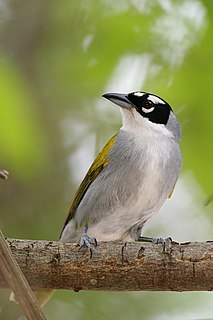 W
WPhaenicophilus is a genus of birds that was formerly placed in the family Thraupidae, but is now placed in the Hispaniolan tanager family Phaenicophilidae. Its members are sometimes known as palm-tanagers.
 W
WThe Hispaniolan amazon or Hispaniolan parrot, colloquially known as cuca, is a species of Amazon parrot in the family Psittacidae. It is endemic to Hispaniola, and has been introduced to Puerto Rico. The main features that differentiate it from other amazons are the white forehead, pale beak, white eye-ring, blue ear patch, and red belly.
 W
WThe Antillean piculet is a species of bird in the woodpecker family Picidae. It is monotypic within the genus Nesoctites. The species is evolutionarily distinct from the other piculets and is afforded its own subfamily Nesoctitinae. It is endemic to the Caribbean island of Hispaniola. A fossil feather in amber attributed to the genus has been found in the Dominican Republic, showing that the ancestors of the species have been isolated on Hispaniola for at least 25 mya.
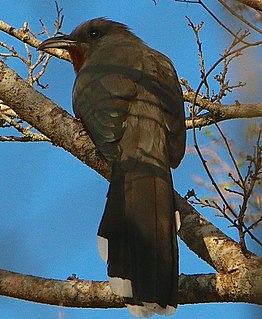 W
WThe bay-breasted cuckoo is a species of cuckoo that is endemic to the Dominican Republic in the Caribbean. In the Dominican Republic, it is known locally as "cúa", the name coming from the call it makes, followed by a "u-ak-u-ak-ak-ak-ak-ak-ak ak-ak" sound.
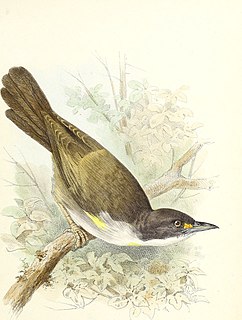 W
WThe eastern chat-tanager is a species of bird formerly placed in the family Thraupidae.
 W
WThe Hispaniolan crossbill is a crossbill that is endemic to Hispaniola, and the only one of its genus in the Caribbean.
 W
WThe white-necked crow is the largest of the four Caribbean corvids. It is endemic to the island of Hispaniola. It was formerly also found on Puerto Rico, but is extirpated there, due to considerable forest clearance and hunting.
 W
WThe Hispaniolan lizard cuckoo is a species of cuckoo in the family Cuculidae. It is endemic to the island of Hispaniola. Its natural habitats are subtropical or tropical dry forest and subtropical or tropical moist lowland forest.
 W
WThe Hispaniolan emerald is a species of hummingbird in the family Trochilidae. It is endemic to Hispaniola. Its natural habitats are subtropical or tropical moist lowland forest, subtropical or tropical moist montane forest, and heavily degraded former forest.
 W
WRidgway's hawk (Buteo ridgwayi) is a bird of prey in the family Accipitridae endemic to the Dominican Republic in the Caribbean. It was named after the American ornithologist Robert Ridgway. It is a brownish-grey bird, with a barred tail and underparts. It feeds mainly on reptiles, but also consumes small birds and mammals. It nests high in trees during the spring. The population of Ridgway's hawks have been declining because of habitat destruction and human persecution in the Dominican Republic, and is classified as "critically endangered".
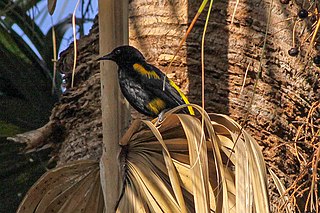 W
WThe Hispaniolan oriole is a species of bird in the family Icteridae. It is endemic to Hispaniola.
 W
WThe ashy-faced owl is a species of owl in the family Tytonidae. It is found on Hispaniola. Its natural habitats are subtropical or tropical dry shrubland, subtropical or tropical high-altitude shrubland, and heavily degraded former forest.
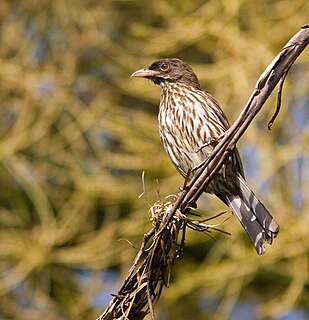 W
WThe palmchat is a small, long-tailed passerine bird, the only species in the genus Dulus and the family Dulidae. It is thought to be related to the waxwings, family Bombycillidae, and is sometimes classified with that group. The name reflects its strong association with palms for feeding, roosting and nesting.
 W
WThe Hispaniolan parakeet is a species of parrot in the family Psittacidae that is endemic to the island of Hispaniola. Localized feral populations exist in Guadeloupe, Puerto Rico and the Miami, Florida area, where they sometimes associate with canary-winged parakeets. It is often captured for use as pets.
 W
WThe Hispaniolan pewee is a species of bird in the Tyrannidae (flycatcher) family. It is found on Hispaniola in the Caribbean.
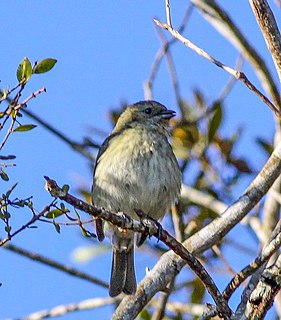 W
WThe Antillean siskin is a species of finch in the family Fringillidae, and the only species of the genus Spinus found in the Caribbean. It is found on Hispaniola. Its natural habitats are subtropical or tropical moist montane forests and heavily degraded former forest.
 W
WThe golden swallow is a passerine in the swallow family, Hirundinidae. Two subspecies are recognised, the extinct Jamaican golden swallow and T. e. sclateri of Hispaniola. It usually inhabits the hills on the interior of islands, preferring open country. Currently, this swallow is restricted to isolated montane forests that primarily consist of the Hispaniolan pine. This species is considered to be a vulnerable species by the International Union for Conservation of Nature (IUCN); the nominate subspecies, T. e. euchrysea, is extinct. The exact cause of extinction is unknown, but likely factors include predation by introduced mammals and habitat loss, although the habitat loss theory is not supported by much evidence. The last sighting of the nominate subspecies was in Hardwar Gap, with three birds being seen on 8 June 1989.
 W
WThe black-crowned tanager or black-crowned palm-tanager is a species of bird of the family Phaenicophilidae, which was formerly placed in the family Thraupidae. It is found on Hispaniola.
 W
WThe La Selle thrush is a species of bird in the family Turdidae native to Hispaniola. A skulker of broadleaf and pine forests around 1300m, it is limited to a small and declining population in inland Dominican Republic, as well as a relict population in Haiti.
 W
WBroad-billed todies is a species of bird in the Todidae family, and one of two Todus species found on Hispaniola, along with the narrow-billed tody.
 W
WThe narrow-billed tody is a species of bird in the Todidae family, and one of two Todus species found on Hispaniola, along with the broad-billed tody. It is endemic to the Caribbean island of Hispaniola. Its natural habitats are subtropical or tropical moist montane forests and heavily degraded former forest.
 W
WThe Hispaniolan trogon is a species of bird in the family Trogonidae. It is the national bird of Haiti. It is endemic to Hispaniola in the Caribbean. It is one of the only two trogon species found in the Caribbean. Its natural habitats are subtropical or tropical moist montane forests, and heavily degraded forest. It is threatened by habitat loss. It is mostly confined to a few remaining protected areas.
 W
WThe green-tailed warbler, also known as the green-tailed ground warbler, is a species of songbird endemic to the island of Hispaniola and adjacent islets. It has occurred as a vagrant on the Turks and Caicos Islands.
 W
WThe white-winged warbler, also called Hispaniolan highland-tanager, is a species of bird classified in the family Phaenicophilidae. It is the only member of the genus Xenoligea, and is found solely on Hispaniola.
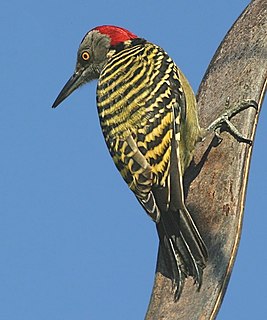 W
WThe Hispaniolan woodpecker is a medium-sized woodpecker endemic to the Caribbean island of Hispaniola. The back is covered in yellow and black stripes. Males have a dark red crown and nape, while in females, the red colour is restricted to the nape. The tail base is brilliantly red, while the tail itself is black.